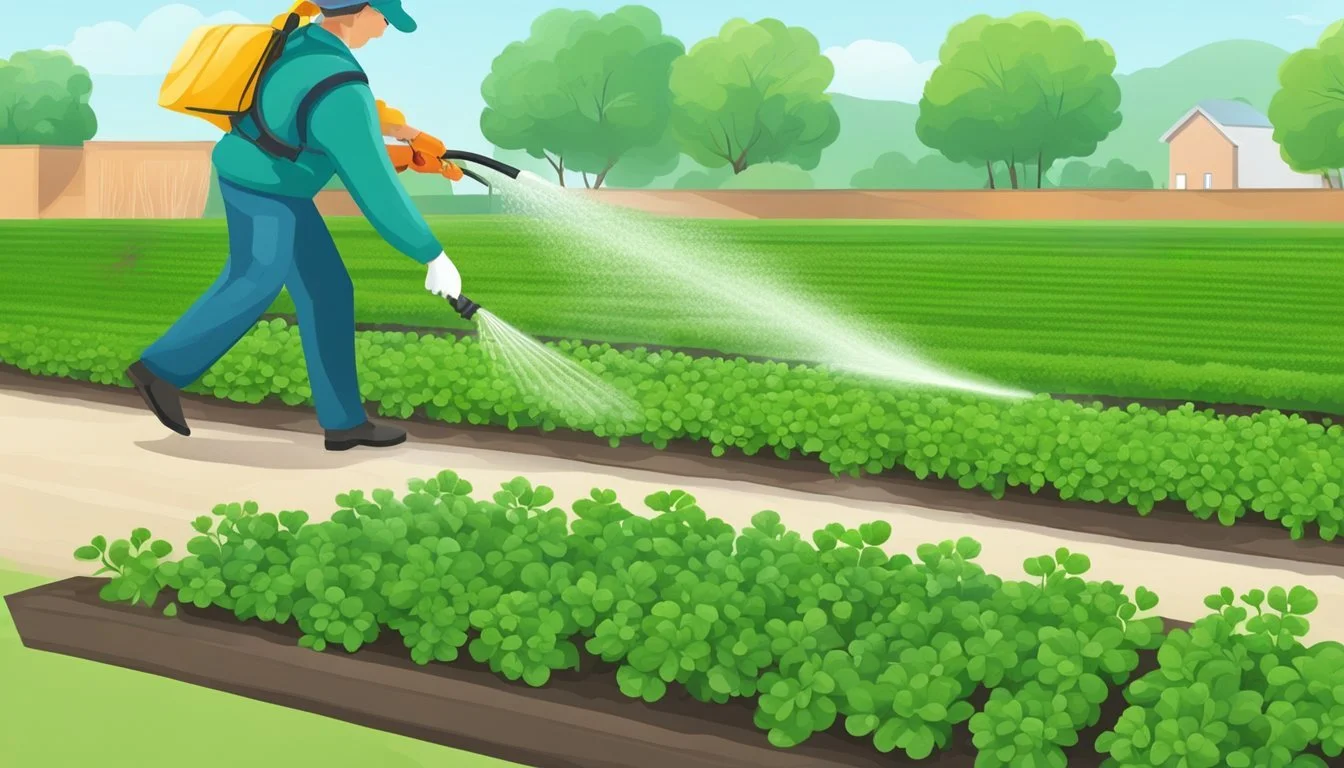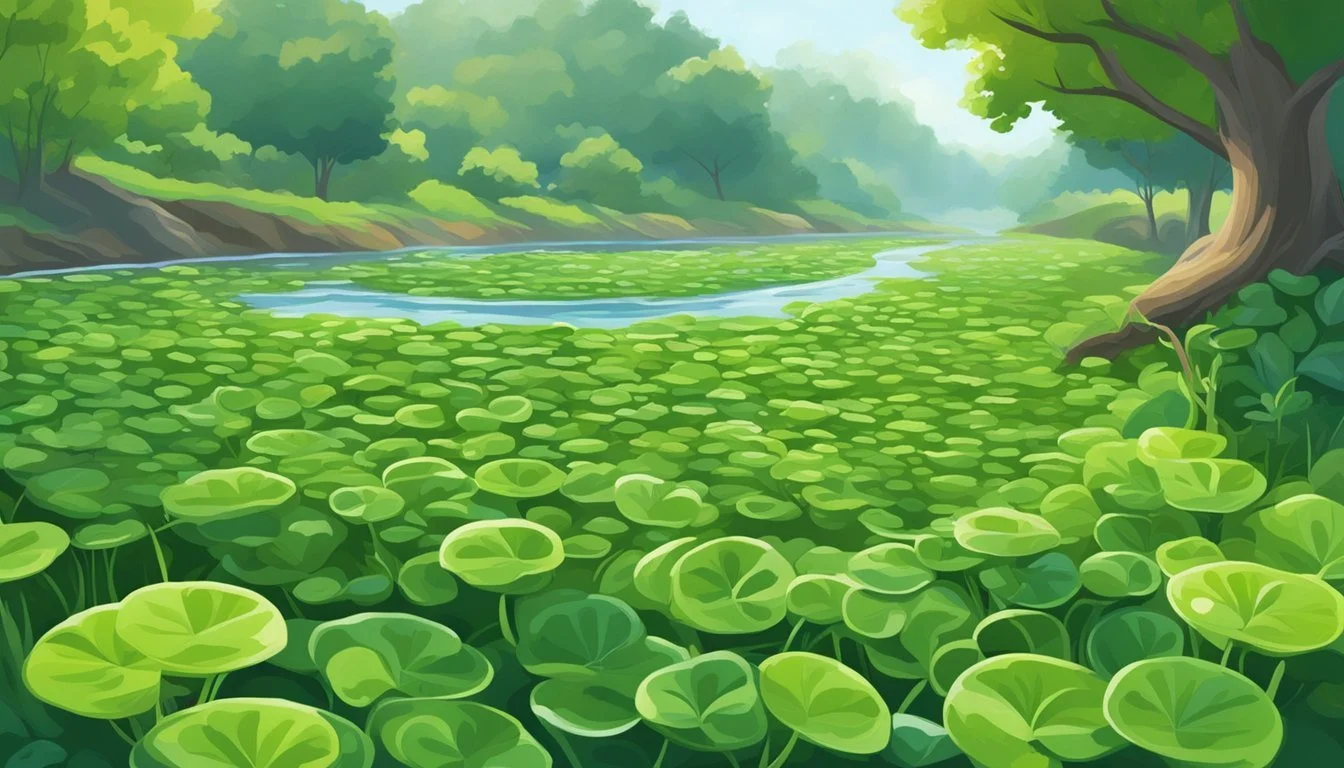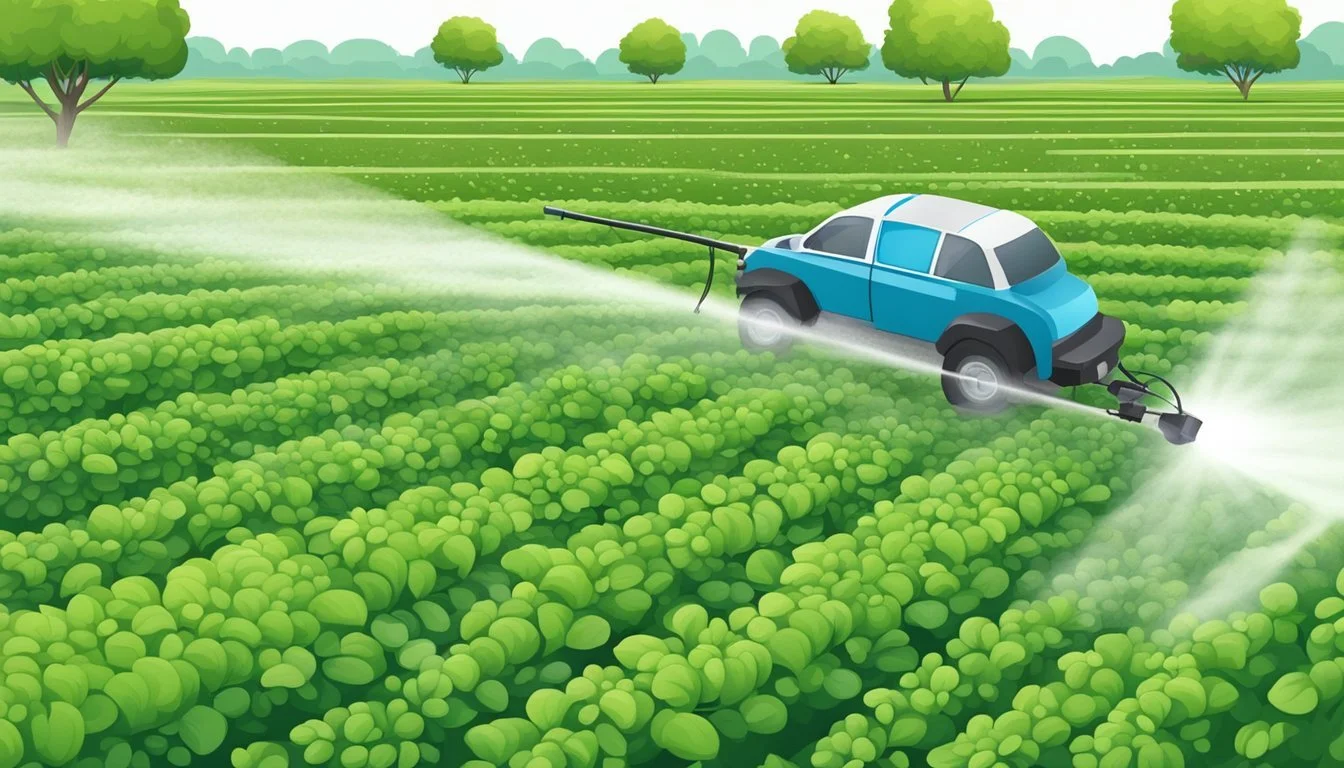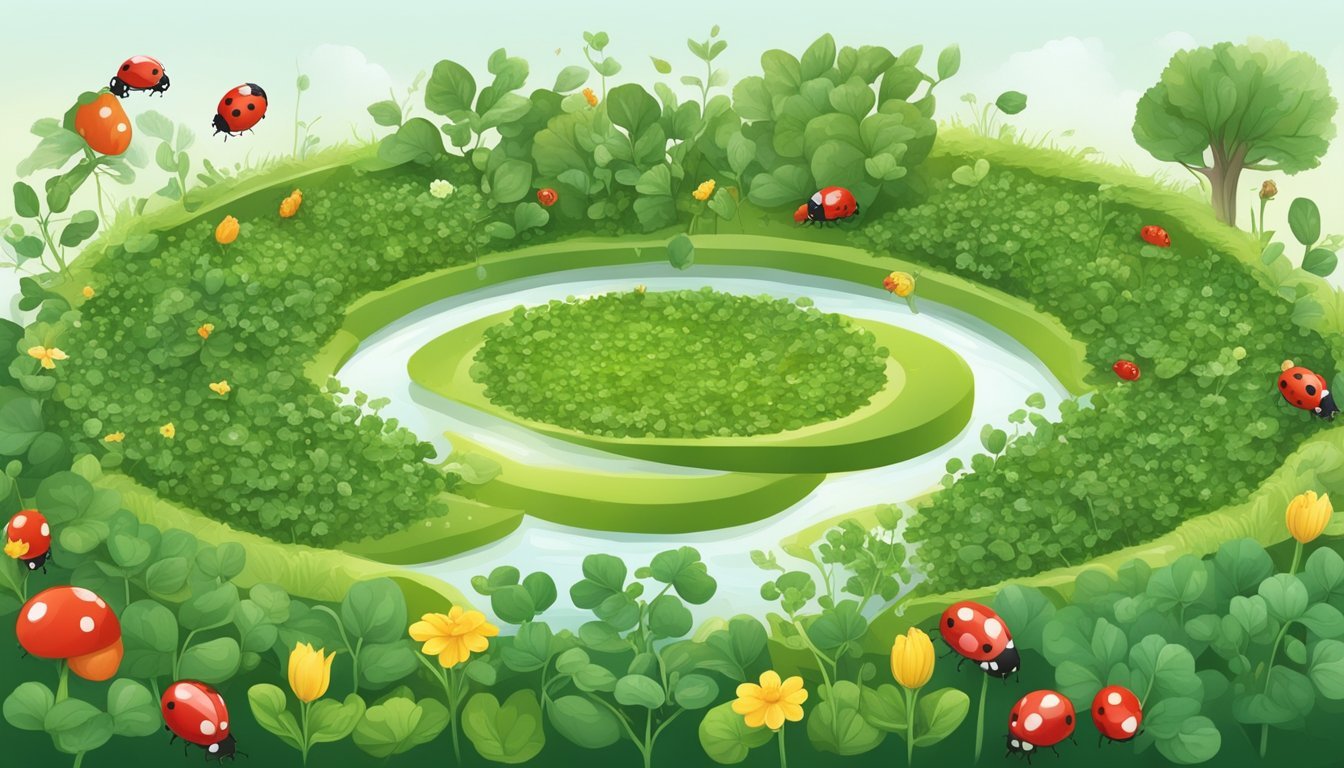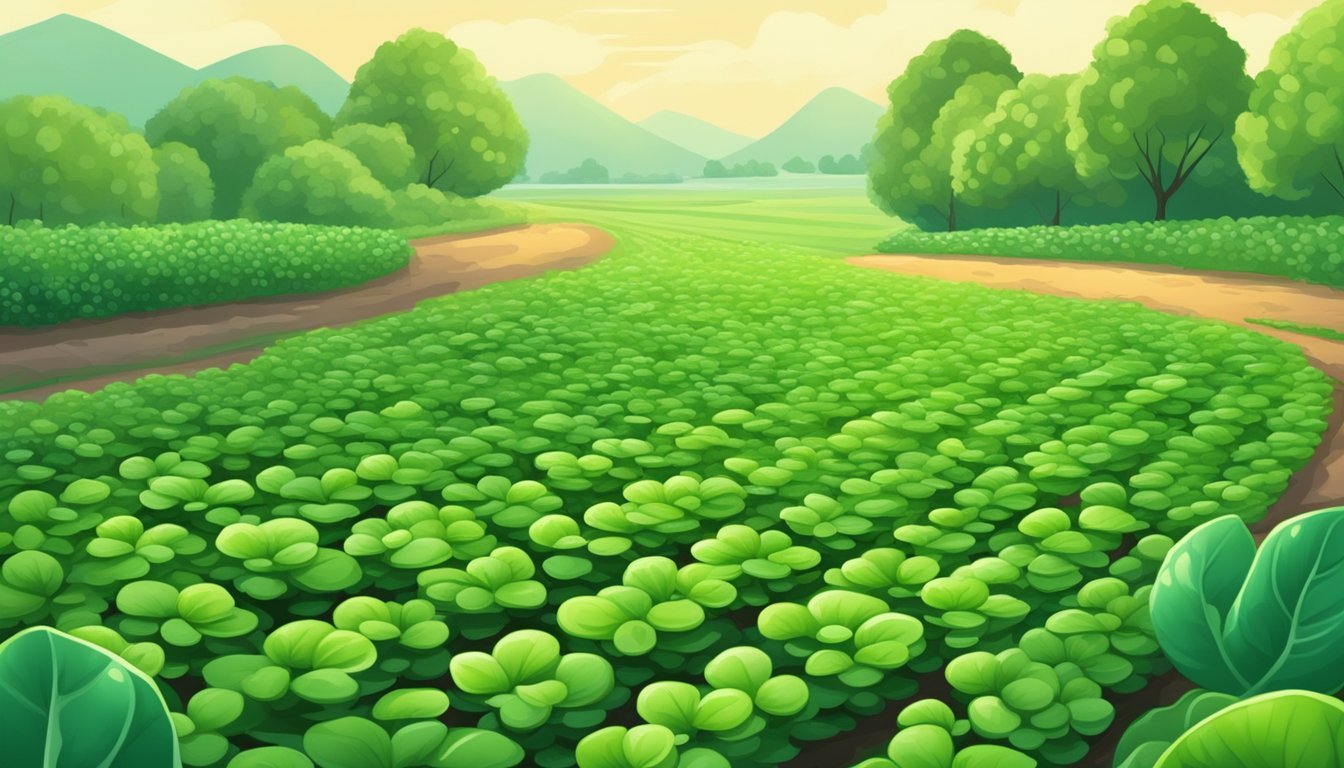Pest Control for Watercress
Effective Strategies for Healthy Growth
Watercress, an aquatic plant revered for its peppery flavor and nutritional value, has increasingly become a staple in both home gardens and commercial production. While watercress is lauded for its ease of growth, particularly in moist environments, it is not without its challenges—pest control being a prime concern. Effective pest management is crucial to preserve both the health of the watercress and the safety of the consumers who enjoy it.
In tackling the range of pests that target watercress, from aphids and scale insects to slugs and snails, growers must adopt a strategic approach. Early detection is key, as it is with most plant diseases and pest infestations, allowing for timely and often less invasive control measures. The choice of appropriate pest control methods, whether organic or chemical solutions such as neem oil or insecticidal soaps, can significantly impact not only the immediate problem but also the broader ecological system within which watercress thrives.
Balancing pest control methods to ensure they are effective yet environmentally conscientious requires a refined understanding of both watercress cultivation and integrated pest management (IPM) techniques. By employing a combination of cultural, biological, and chemical strategies, growers can safeguard their watercress crops against harmful pests while maintaining sustainable growing practices that benefit the ecosystem as a whole.
Understanding Watercress
Watercress, scientifically known as Nasturtium officinale, is a versatile semi-aquatic, perennial plant commonly used both culinarily and medicinally. This section outlines its botanical classification and the ideal growth conditions for cultivation.
Classification and Varieties
Nasturtium officinale, a member of the Brassicaceae family, is native to Eurasia and naturalized in the United States. Watercress is its common name, and it's characterized by its succulent, green leaves and crisp, peppery flavor. It is a perennial plant, meaning it can live for more than two years, continually producing leaves for harvest. Varieties of watercress may differ slightly in leaf shape and size, with some bred for resilience against pests and diseases.
Ideal Growth Conditions
Watercress thrives in:
Light: Partial shade to full sunlight.
Soil: Wet, fertile, and semi-aquatic environments.
pH: Slightly alkaline conditions (pH 6.5 to 7.5).
It requires constant moisture and typically grows in slowly moving streams or springs where it can spread along the water's edge. While it can be found wild in many parts of the United States, controlled cultivation allows for optimal growth and ease of harvesting. Cultivating watercress away from natural water bodies helps prevent the spread of waterborne diseases and pests that the plant may otherwise encounter.
Planting Watercress
Planting watercress successfully requires careful seed selection, soil preparation, and an understanding of the unique growing environments. This section will guide you through each stage of establishing this nutritious, leafy green.
Seed Selection and Propagation
To grow watercress from seeds, one should choose high-quality seeds that are suited for their growing environment. Whether planting indoors or outdoors, starting the seeds in seed trays using soil that is rich in organic matter provides the best chance for germination. Keep the soil consistently moist but not waterlogged to encourage sprouting. For propagation from cuttings, snip a healthy stem from a mature plant and place it in water to root. This typically results in new growth within a few days.
Soil Preparation and Planting Techniques
The ideal soil for watercress should be rich and retain moisture well, simulating the plant's natural aquatic habitat. Before planting, one must ensure the soil is well-aerated and has been amended with organic compost for added nutrients. Watercress is often planted in shallow streams or in consistently watered soil to maintain the moist conditions it thrives in. During the early spring, seeds or cuttings should be placed in the prepared soil, ensuring they have ample space to spread.
Growing Watercress Indoors and Outdoors
Watercress can be grown both indoors and outdoors with success if the proper conditions are met. When growing indoors, using pots with good drainage is crucial, and the water level should be managed to keep the roots moist but not submerged. Outdoor growth typically requires a semi-aquatic environment like a water garden or a moist terrestrial garden. In either case, watercress prefers indirect sun and cool temperatures, which promotes lush, flavorful leaves.
Optimal Growing Conditions
Creating the right environment for watercress will yield a healthy and productive crop. Focusing on precise water, pH, and climate considerations is crucial, as well as providing adequate light and maintaining suitable temperature ranges.
Water and Humidity Requirements
Watercress thrives in a consistently moist environment, making abundant water access non-negotiable. For optimal growth, it prefers running water, but it can also prosper in damp soil conditions. One must ensure that the planting medium remains saturated but not waterlogged.
Water: Maintain a steady water source; watercress should sit in shallow moving water or, if in containers, on a moisture-retentive, well-draining medium with water always available in the tray below.
pH: The ideal pH level for watercress ranges from 6.5 to 7.5. Consistent monitoring and adjustment are important, as pH substantially influences nutrient uptake and plant health.
Humidity: A humid atmosphere supports watercress growth, mimicking its natural streamside habitat. Aim for a humidity level that mirrors a cool, damp environment without being excessively wet and causing mold growth.
Light and Temperature
With regards to light and temperature, watercress shows a preference for specific conditions typical of its native climate.
Light: Watercress requires ample light but should be protected from the intense midday sun. It grows well in full sun to partial shade environments. Direct morning sunlight coupled with afternoon shade can create an ideal light balance.
Temperature: Cooler temperatures benefit watercress growth, with an optimal range between 50°F and 70°F (10°C to 21°C). High temperatures can instigate bolting, so maintaining a cooler climate or providing shade during hotter periods is vital to prevent premature flowering.
Pest Management
Effective pest management in watercress cultivation is essential to ensure a healthy crop. Identification of common pests, appropriate control methods, and preventative strategies are key components of an integrated pest management plan.
Common Pests Identification
Identifying pests promptly can be the difference between a minor issue and a severe infestation. Common pests that affect watercress include snails and slugs, which feed on the leaves and stems, possibly introducing disease. Whiteflies and spider mites are also prevalent; they suck the sap from the plants, weaken them, and can transmit diseases. Regular monitoring of the watercress is necessary to detect the presence of these pests early.
Natural and Chemical Control Methods
For controlling these pests, there are both natural and chemical options. For slugs and snails, natural predators can be introduced. Chemical treatments include products containing glyphosate, which is effective against weeds that compete with watercress; however, glyphosate should be used carefully due to its non-selective nature and potential to harm the watercress itself if applied improperly.
Natural control methods include:
Introducing predatory insects to combat whiteflies and spider mites.
Applying neem oil as a natural pesticide to deter a variety of pests.
Chemical control methods include:
Using specific molluscicides for snail and slug populations.
Employing insecticidal soaps or miticides to address whiteflies and spider mites.
Preventative Measures
Preventative measures are critical to avoid the establishment of pests in watercress cultivation. Implementing proper sanitation practices such as removing plant debris can help minimize pest infestations. Encouraging a diverse ecosystem around the watercress can also naturally keep pest populations in check. In areas where watercress has naturalized, careful observation and management practices can prevent the need for more severe pest control measures.
Nutrition and Health
Watercress garners praise for its substantial nutrient contribution to a healthy diet, especially in terms of its rich mineral content and associated health benefits.
Iron and Mineral Content
Watercress stands out as a leafy green with a notable iron content, essential for red blood cell production and oxygen transport. It provides a diverse range of minerals, such as calcium and potassium, which are vital for bone health and blood pressure regulation, respectively.
Health Benefits
The consumption of watercress offers a spectrum of health benefits due to its dense nutrient profile. Watercress is filled with vitamins and antioxidants that support immune function and may contribute to preventing chronic diseases. Moreover, the Vitamin K found in watercress is essential for bone health and blood clotting processes.
Harvesting and Utilization
Harvesting watercress efficiently ensures its quality and vitality, whether it's being used as a garnish or integral part of salads. Storing techniques and culinary uses highlight the versatility of this aquatic herb.
Best Practices for Harvesting
They should harvest watercress during the cooler parts of the day, typically in the morning, to reduce wilting. Using sharp scissors, they can snip the stems just above the water level, ensuring at least one inch of stem is left behind for regrowth. It's best to harvest before the plant flowers for the highest quality leaves. Frequent harvesting is encouraged as it promotes new growth, resulting in a continuous supply, especially during the summer season when the rate of growth is increased.
Storing and Using Watercress
After harvesting, one can store watercress in the refrigerator. It should be wrapped in a damp paper towel and sealed in a plastic bag to maintain its freshness for up to a week. For immediate use, watercress can be washed in cold water, patted dry, and used as a peppery garnish or added to salads, soups, and sandwiches. Given its delicate nature, watercress should be added to dishes just before serving to preserve its crisp texture and vibrant color. When preparing for the market, bunch the stems and keep them in a container with water, changing it daily to keep the leaves fresh.
Further Cultivation Techniques
Effective cultivation of watercress involves specific techniques to ensure plant health and optimal growth. These include regular pruning and maintenance, as well as adapting cultivation methods to aquatic environments, which may require unique considerations.
Pruning and Maintenance
Pruning watercress is essential for encouraging bushy growth and preventing diseases. Gardeners should regularly prune back the stems to keep the plants from becoming too leggy. Additionally, removing flower stalks can redirect the plant's energy towards leaf production for a more abundant crop. Support structures are rarely needed, as watercress tends to grow low to the ground, but ensuring proper drainage is crucial. Pots with drainage holes should be used if not planting directly in a stream or pond to prevent waterlogging.
Cultivating Watercress in Aquatic Environments
Propagating watercress in aquatic environments can lead to lush growth given the plant's preference for wet conditions. For growth in a pond, one should consider the local ecosystem and potential impacts on resident fish and other organisms. It's important to provide a gently flowing source of water to mimic watercress's natural stream habitat. Channels or streams should have a gradual slope to ensure a steady flow of water, and the use of a fine mesh can prevent the spread of watercress into unwanted areas. Regular monitoring and management are needed to maintain the water quality and to prevent the plant from overtaking the pond.
Seasonal and Climate Considerations
Effective pest management for watercress requires understanding and adapting to the seasonal and climate differences that impact plant health and pest populations.
Managing Watercress in Varied Climates
In varied climates, watercress growers must consider the local last frost date, which signals when it is safe to plant without the threat of cold damage. Regions with warmer climates may have an earlier last frost date, allowing for an extended growing season. Meanwhile, watercress in colder climates may remain dormant longer and require protection from late-season frosts.
Seasonal Plant Care
As the seasons change, so do the needs of watercress in terms of pest control. During the dormant season, minimal intervention is typically required. However, with the arrival of spring, watercress becomes more vulnerable to pest infestations. Scale insects, for instance, thrive in the higher temperatures and humidity of the growing season. They can be discouraged by proactive measures, such as applying an Omethoate solution to prevent infestation.
Frequently Asked Questions
In addressing the challenges of watercress cultivation, these frequently asked questions concerning pest control provide precise and practical solutions for gardeners and farmers.
What are common insect pests that affect watercress cultivation?
Common insect pests of watercress include aphids, flea beetles, and leaf beetles. These pests can cause significant damage to watercress by feeding on the leaves and stems, potentially reducing crop yield and quality.
How do I naturally deter insects from my watercress plants?
One can deter insects from watercress plants by encouraging the presence of beneficial insects, such as ladybugs and lacewings, which feed on common pests. Applying neem oil or a mixture of water and mild soap can also deter insects without harming the plants.
What is the process for safely removing insects from watercress plants?
Safely removing insects from watercress involves physically picking them off by hand or using a strong stream of water to dislodge them. Trapping and the use of organic insecticidal soaps can be effective as well.
How can I prevent pest infestations in my watercress garden?
Prevent pest infestations in watercress by maintaining healthy soil, using row covers, rotating crops, and keeping the growing area free of weeds and debris which may harbor pests. Regular monitoring can also help identify and address infestations early.
What are the signs of pest damage on watercress plants?
Signs of pest damage on watercress include holes or chewed edges on leaves, yellowing or wilting, and stunted growth. Gardeners may also notice the presence of insect larvae, eggs, or the insects themselves on the plants.
Are there any pesticides safe for use on watercress that do not affect its edibility?
Products containing glyphosate are considered safe for use on watercress when applied according to the manufacturer's instructions; however, they should only be applied to plants above the water line, and care must be taken to avoid contamination of water bodies. It is always important to check the label for safety instructions and pre-harvest intervals to ensure the plants remain safe for consumption.

